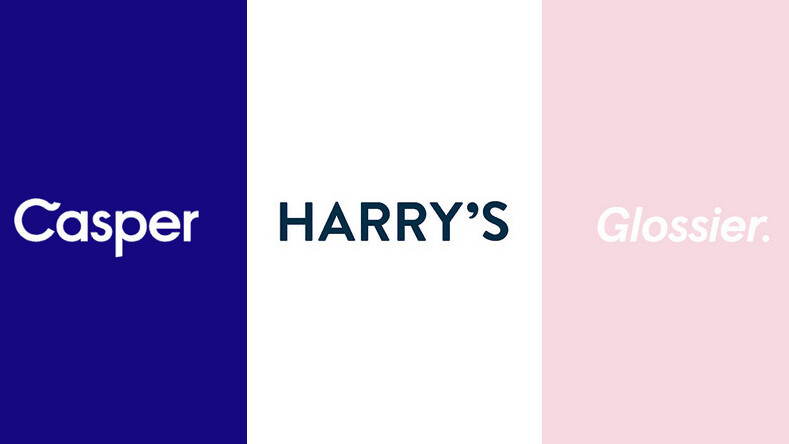
Are today’s direct-to-consumer (DTC) brands losing steam? With products from mattresses to beauty to food being delivered straight to the consumer’s doorstep, how are brands able to differentiate themselves from the competition? And with brands being laser focused on the shopper, are brands giving consumers too much control over how brand relationships are built and the content that brands put forth? Whatever the answers are, it’s clear we’re reaching a pivotal point in the DTC evolution.
On the one hand, VCs continue to invest billions of dollars each year to help consumer brands grow, with the hopes that they will go public or even reach unicorn status. On the other hand, we have started to see cracks in these strategies, with many brands not focusing enough on early profitability and caving to pressure from VCs to meet the valuation expectations of the market at all costs.
The good news is that there’s a viable structure that isn’t actually all that new – one that today’s DTC brands are beginning to implement. More and more companies are finding success by returning to a traditional holding company approach, but one that has been re-engineered to fit today’s market. Will this approach be the savior of DTC brands?
The original holding company model
In the 1950s, consumer holding companies like Procter and Gamble, Johnson & Johnson, and Unilever emerged as a way for each large parent company to essentially protect all of its assets by way of diversification.
Instead of siloing individual brands, the holding company model allowed these companies to build best-in-class expertise in core functions and shared resources like distribution, marketing, and supply chain management that could be leveraged across their portfolio of products.
As a result, brands benefit from collaborative institutional knowledge, capital efficiencies, stronger IP, as well as bigger R&D and marketing budgets. For years, these companies operated primarily through traditional distribution channels (e.g. retail) and with limited technological support.
The evolution of DTC brands
More recently, there has been a seismic shift as DTC brands make technology a centerpiece of their marketing efforts, resulting in a more direct and ongoing dialogue with consumers. Digital engagement strategies have proven time and again that they can yield stronger one-on-one relationships with consumers. In turn, these relationships create communities of loyal, engaged audiences, which – in combination with engaging content – contribute heavily to brand success.
The problem, though, is that the success tends to be short-lived. While DTC darlings like Warby Parker and Casper experienced early success, they and other DTC brands are in danger of being stuck in venture purgatory. For one thing, these companies have learned that they have to build their own loyal followings – they can no longer just “buy” them – and this is a process that takes significant resources, capital, and time.
Additionally, these companies have raised so much capital that they have to be hyper-focused on generating top-line revenue growth to validate valuations that satisfy their VC backers. These factors, combined with limited product diversity, makes it difficult to develop disciplined operational habits and achieve sustainable growth. Based on these challenges, a new approach is warranted.

The reemergence of the holding company model
One approach that is working well is a holding company model, where young companies with a DTC approach can take the learnings that the P&Gs and Unilevers of the past created and reimagine it for today’s market. Companies like Harry’s and Glossier are two success stories, both embracing the holding company model as an opportunity to create a portfolio of products and leverage owned audiences and shared resources across their portfolios.
Harry’s raised $112 million last February to move beyond just shaving products and set its sights on competing on an even playing field with Procter & Gamble, Gilette’s parent company. Shortly after executing this strategy, Edgewell acquired Harry’s for $1.37 billion because of Harry’s next-generation holding company approach, product innovation through their “Harry’s Labs and Ventures” arm and the ability to revitalize Edgewell’s dated holding company environment
Similarly, digital-first beauty brand Glossier reached unicorn status last year by building the brand from consumers up rather than brand down. Glossier also recently launched Glossier Play, the first of many additional brands that the company will likely bring to market.
What’s next?
Looking ahead, the brands that pivot to a holding company model will need to prioritize the following to be successful:
- Embrace the right structure — Brands need to structure themselves with a portfolio of brands from day one, as opposed to starting out with one or two brands and leaning on a “wait and see” approach. This requires thoughtful ownership considerations from the launch stage of any brand.
- Leverage customer data — Brands need to understand the importance and value of data. Major companies like Nestle and Nike are proof positive that customer data matters. Last spring, Nestle embedded SAS Analytics into key business processes and Nike recently bought a data science company to better serve consumers personally at a global scale.
- Embrace and maintain a disciplined mindset — Brands need to move with speed and dexterity in how they operate and pursue growth. As brands find initial success and scale, they must stay nimble in how they build their operational processes and deploy resources. This is particularly important as multiple opportunities become available once momentum is gained.
- Facilitate efficiencies — Brands also need to show capital efficiency and use owned machinery and platforms to create additional unfair advantages. Brands should stay open to outsourcing any capabilities that are not core to the business in order to streamline processes and maximize efficiencies.
The evolution of today’s holding company approach has been far from a straight line. If implemented correctly, brands can achieve significant adaptability in scaling their business models and ultimately control their own DTC destinies.
Get the TNW newsletter
Get the most important tech news in your inbox each week.





